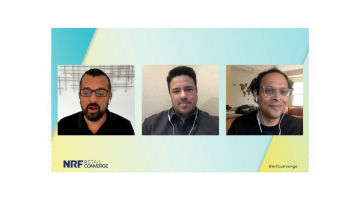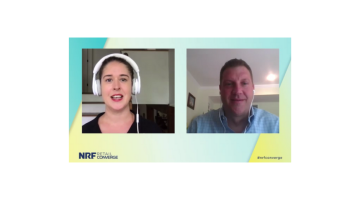In a session at NRF Retail Converge, Shannon Schuyler, principal, chief purpose & inclusion officer for PwC, moderated a conversation about the current state of diversity and inclusion initiatives in retail. Joining her were Mark Irvin, chief inclusion, diversity and talent officer for Best Buy, and Laura Watt, EVP human resources with Diageo North America.
Schuyler began by noting the considerable progress in the push toward greater diversity and inclusion in the workplace, especially in retail. “We’re in a new place,” she said, “and we don’t want to cede any ground.”
Observing that diversity and inclusion efforts are often referred to as a “journey of discovery,” she said, “Why should it be a journey? We don’t treat supply chain or cash collection like a journey — it’s a job. You get it done. How do we change the D&I narrative?”
What’s at stake
The question, Irvin responded, is the speed at which a company is going to commit itself to transformation. As an example, he cited the digital revolution and the adoption of ecommerce. (Until 18 months ago, Irvin was Best Buy’s SVP of supply chain.) “All of us were on a journey,” he said. “Those of us who were slower are no longer here.”
The same urgency applies to D&I, he said, and for many of the same reasons. “Society has changed,” he said, “and we need to change too. Taking an incremental approach is not OK — we’re going to have to make radical adjustments to stay engaged with our customers and our employees.”
“But we haven’t been doing that,” Schuyler pointed out. “If we saw the same need for urgency in a business unit, we would have done something, and we haven’t. We’ve just said, ‘It’ll be better in the future.’”
A new day
Watt responded that it feels different now, largely because both employees and customers are demanding more. “It’s a matter of both the head and the heart,” she said. “If we can’t demonstrate that we’re here to do more than just make a profit, we will not get our share of talent or engage our customers — and in five years, we’ll be gone. Our companies will be judged by the way they manage this change.”
Irvin agreed. “We’re at a critical point in our history,” he said. “Not too long ago, supply chain management went from infrastructure to strategy. How our customers and employees experience diversity and inclusion has become the same kind of thing.”
Retail, he noted, is in the forefront of this wave of change, because it is everywhere. “We have to have the compassion and purpose to speak out with our voices as human beings. We can lead in that way like no other industry.”
Speaking of leadership, Schuyler noted that CEOs are generally taught to focus on shareholder value and brand, not the composition of the workforce. Many company leaders she talks to are asking, essentially, ‘How do we make sure we’re doing what we need to be doing without losing our focus on business?’
“I don’t think we can be silent,” Watt responded, “either internally or externally, but we need to make choices. If we’re saying something, there need to be actions to back it up.”
Getting it done
“ESG goals — environmental, social and governance — need to be pursued with the same rigor in reporting as financial goals,” said Schuyler. “We all need to do this. It’s not something a separate designated group can be in charge of, any more than they could in the case of revenues.”
Irvin said one partial solution to more inclusive hiring is to address the familiarity issue (“familiarity” being a less loaded term than “bias”). Hiring managers tend to hire people who are like themselves, he noted, because they feel at ease with them. In addition, he recommends companies step back from overloading job requirements. “If you don’t really need a degree to do whatever it is,” he said, “stop asking for one.”
Accountability is important, Watt said. “We put gender diversity into the job description of senior leadership, and it started to happen,” she said. “Five years ago, our leadership team was overwhelmingly white men. Now it’s 40 percent women, and 40 percent ethnically diverse. This doesn’t happen by accident.”
A journey worth taking
Nor, the panelists agreed, does it happen quickly. Except when it does, of course. “We,” said Schuyler, speaking of PwC, “have been recruiting at the same schools for decades. Then we finally started going to different ones, and we looked at each other and said, ‘The diversity is there! It’s not true that ‘There aren’t any.’”
Mostly, though, it takes time, effort, commitment and determination — plus, as noted, a willingness to unify the head and the heart.
“You need to keep widening the circle,” Irvin said, “and make yourselves both transparent and accountable. It takes longer to get to the end that way, but you wind up in a better place.”

